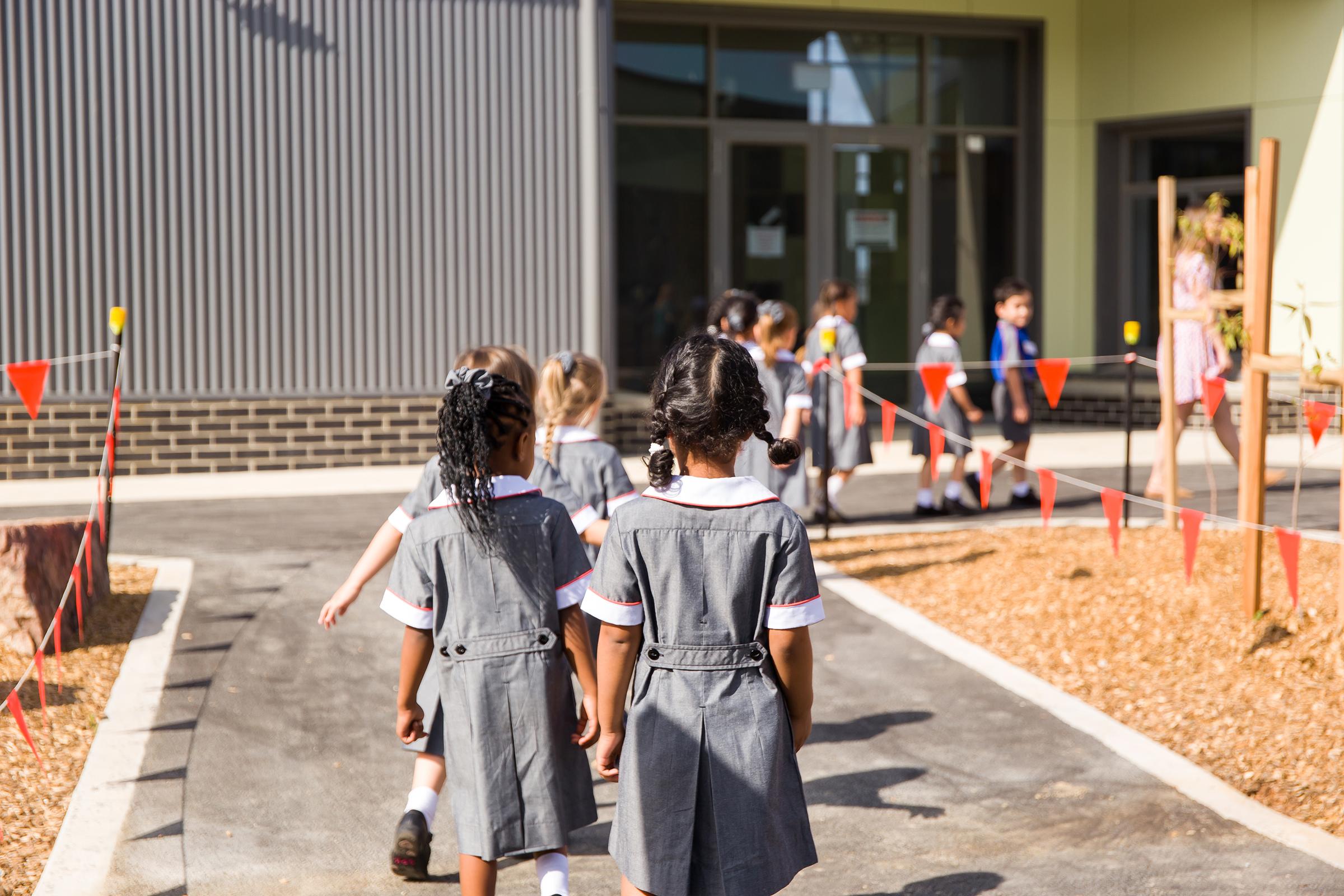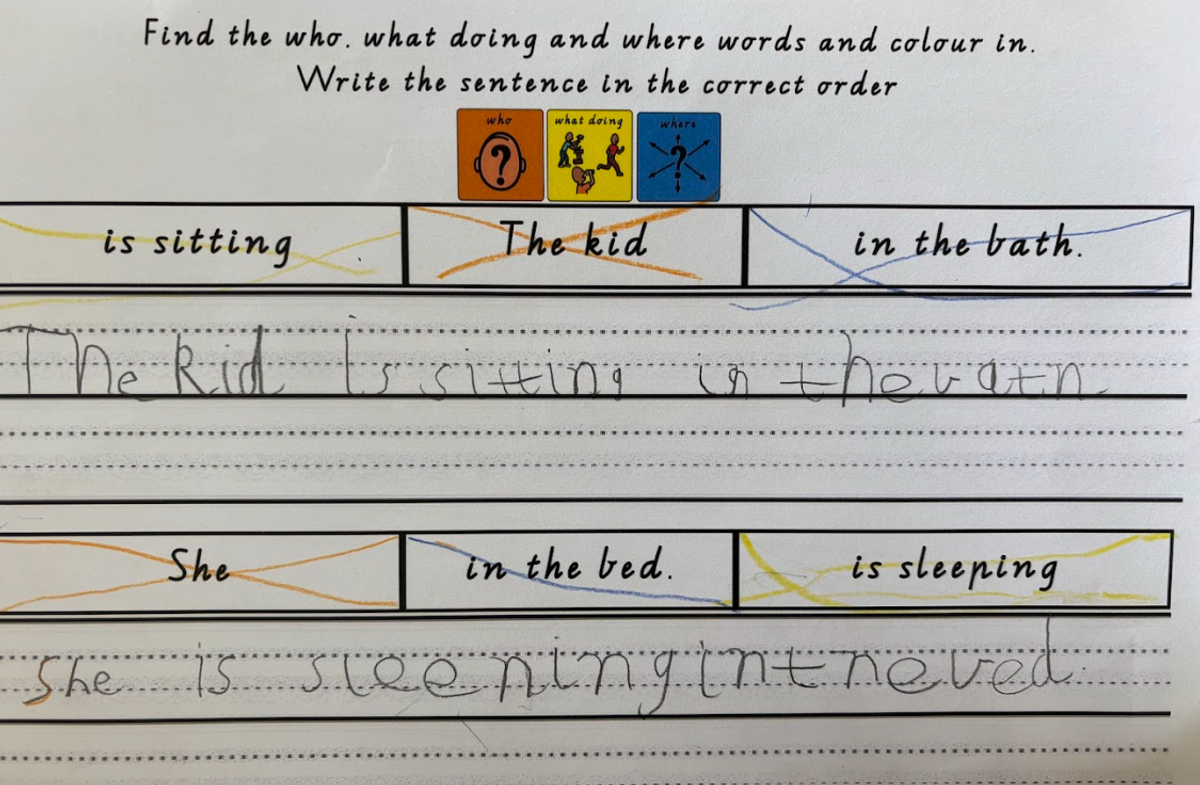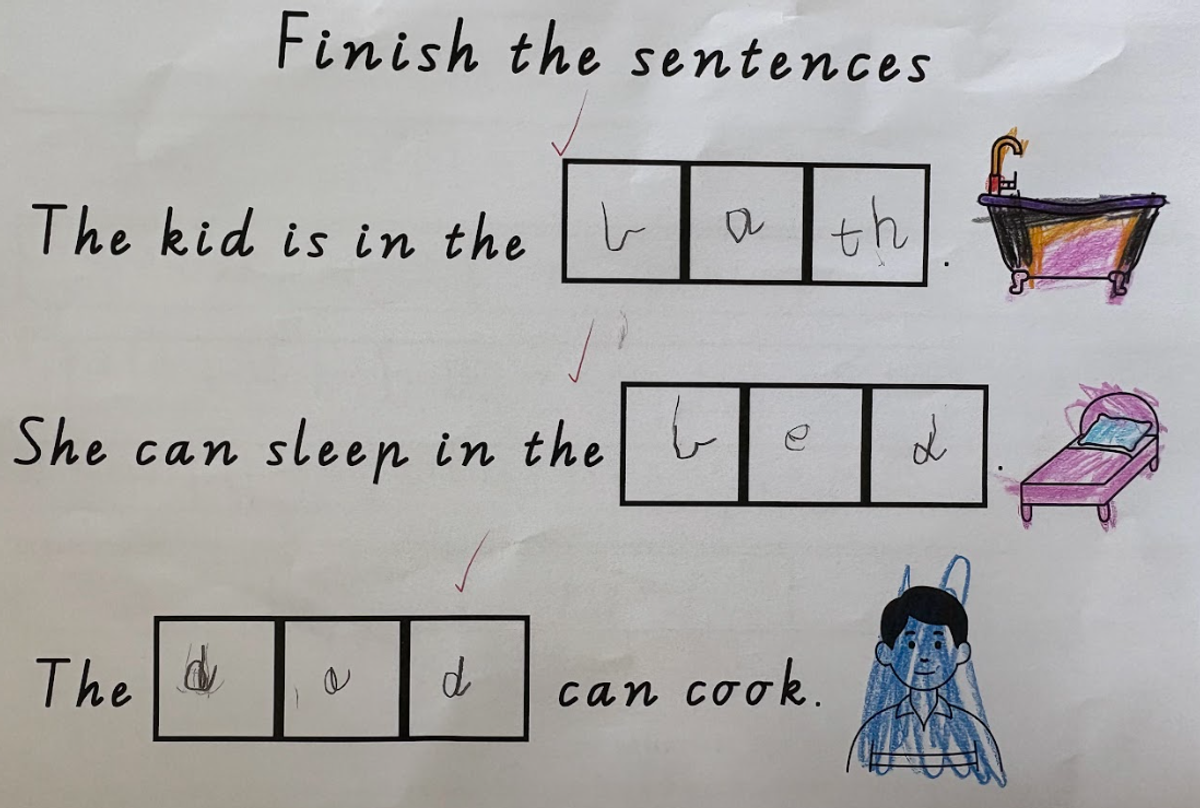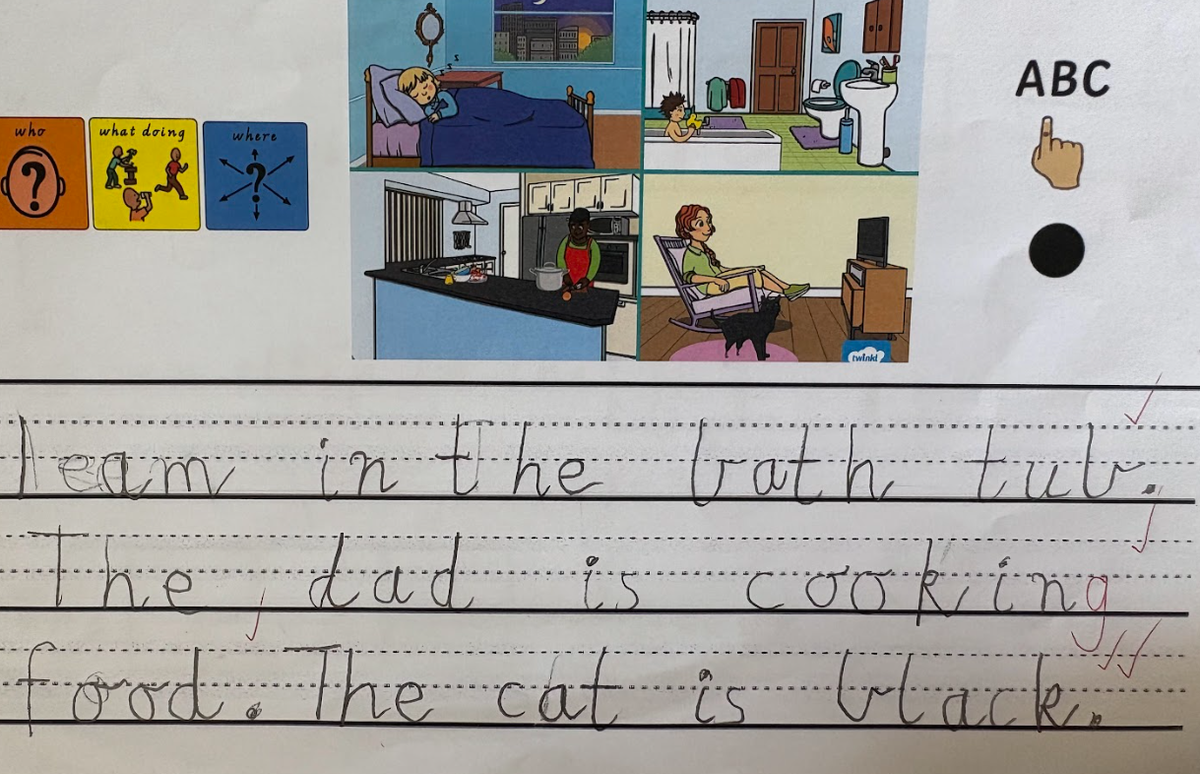Prep

Reading
In Reading this past fortnight, we have been continuing to learn about digraphs — two letters that make one sound. We explored the new digraphs oo as in moon, th as in thumb, and ng as in swing. Students practiced writing the letters, recognising these sounds in words and where they come - the beginning, the middle or the end? They have been reading the new digraphs in stories and using them when spelling. We enjoyed finding words with our new digraphs in books and playing games to help us remember their sounds. Students love playing “what’s my middle sound?” using all the digraphs we have learned so far.
We also continued to practise our tricky words — those special words we need to remember because we can’t sound them out. Through songs, games, and flashcards, students have been building confidence recognising and reading these words automatically. It’s been wonderful to see how much progress everyone is making with both their decoding skills and their growing sight word vocabulary!
In the same stream as tricky words, we daily practice the letters of the alphabet and their corresponding characters, for example the letter is ‘e’, the sound is /e/ and the character is Eric Elephant. Each letter’s character has a corresponding action - Eric Elephant blows his trunk. The repetition of this practice ensures students make the connections between all three - letter, sound and character which helps greatly with their recall when reading.
Lastly, in reading we have continued to practice reading CVC and CVCC words, tapping the sounds out down our arms before we then blend them together. Again, this practice greatly increases students' memories, helping to move this from their short term memory to their long term memory even faster. Students' reading is becoming quicker and more fluent with every week that passes which is brilliant to see.
Writing
Our Prep students have been working hard on their writing skills this term! They have been practising CVC words (such as cat, dog, and pen) and CVCC words (like hand, milk, and jump) to strengthen their sound–letter knowledge and spelling confidence.
Students have also been learning to write full sentences using Colourful Semantics, a fun and visual approach that helps them understand sentence structure by identifying who, what doing, what, and where. This strategy encourages students to create more detailed and meaningful sentences in their writing.
Maths
Over the past two weeks in Maths, students have been exploring how to sort, count, and collect data in fun, hands-on ways that help them make real-world connections to numbers and information.
Last week, our focus was on sorting collections into two groups based on one difference, such as colour, size, or shape. Students practised identifying how items are different, sorting them into two groups, and then using 1:1 counting to compare which group had more or less. We also explored how to answer simple questions about given data sets and how to collect data by observing or asking questions. Students are beginning to apply their mathematical understanding to solve open-ended problems and explain their thinking in different ways.
This week, we are extending this learning through our focus on Yes/No questions and data collection. Students are learning how to:
- ask and answer Yes/No questions
- collect and record data using tables and tally marks
- compare and represent data to show which response has more or less
- discuss what their data shows and draw conclusions from the results
Students took part in engaging, hands-on activities such as:
- Celebrity Heads (Yes/No questions) to practise forming clear questions
- Human Graphs, where students stand in “Yes” or “No” groups to visualise data
- class surveys, collecting and recording results in tables
- sorting stations, comparing items and analysing data as a group
Through these activities, students are building their understanding that data helps us learn information and that numbers can tell stories about what people think, like, or do.
SEL and other
This fortnight, our Prep students have been busy learning all about themselves, others, and the world around them! We began by practising how to say and describe our home addresses, learning about where we live and why it’s important to know this information. Students enjoyed sharing what makes their homes and neighbourhoods special.
We also explored the important idea that everyone can do and enjoy different things, no matter their gender. Through stories and discussions, students learned that it’s okay to be who they are, to keep trying things they love, and to talk to a trusted adult if someone says something unkind. It was wonderful to see students confidently sharing examples of how they can be kind and fair to everyone.
In our Culture lessons, we have been learning about different cultures and countries, with a special focus on Afghanistan. Students have explored the Afghan flag, traditional clothing, and food, and even had the chance to copy and write words from the culture.
We have also been thinking about how to care for our special places, such as our classroom, playground, and natural spaces. Students have shared great ideas about how to keep these areas tidy and safe for everyone. Alongside this, we’ve been practising how to be strong and gentle—showing strength and confidence while also being kind and thoughtful in our words and actions.
It has been a wonderful fortnight of learning that celebrates identity, respect, and care for others and our world!



